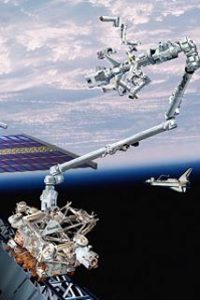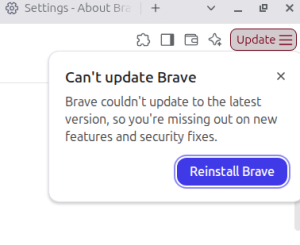STS-121 Delivers Thomas Reiter

STS-121 As Narrated By The Crew
Discovery Returns To Flight
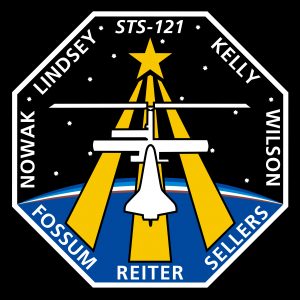
STS-121 was commanded by Steven Lindsey with Mark Kelly as the pilot. Mission Specialists included Michael Fossum, Lisa Nowak, Stephanie Wilson and Piers Sellers. Thomas Reiter of the ESA was joining the Expedition 13 crew on the International Space Station and would continue on through Expedition 14. He was slated to carry out experiments that a Russian cosmonaut would have originally carried out along with executing an experiment program for the European Space Agency.
After a delay of a few days due to threatening weather, Discovery lifted off on July 4, 2006, carrying the Leonardo MPLM with 4,000 kilograms of cargo. They did shed some foam pieces and one of them might have struck the underside of the orbiter. The pieces were small enough that it didn’t cause concern. As they spent the next two days maneuvering to catch the space station, Nowak and Wilson used the Discovery’s robotic arm to lift the OBSS out of the payload bay. They maneuvered it so that its imaging system could send pictures of the wings and nosecap back to controllers on the ground for analysis. Sellers prepped the Discovery’s computers and Reiter prepped the shuttle’s mid-deck for transfer of cargo to the International Space Station. Sellers, Fossum and Kelly checked out the EMUs that would be used for the planned EVAs.
On the space station, Vinogradov and Williams prepared cameras for photographing Discovery’s approach and also made final preparations to PMA-2 for docking. On July 6, Discovery rendezvoused with the space station and Kelly performed the R-bar maneuver so that the Expedition crew could photograph the shuttle’s underside. Lindsey docked with the space station at 10:52 and the hatches opened at 12:30. Williams commented, “It’s a full house. The climate has changed significantly.”
Reiter lost no time transferring his couch lining and Sokol pressure suit to Soyuz TMA-8, thus officially joining the Expedition 13 crew. In interviews, Vinogradov and Williams both expressed their enthusiasm that the space station now had a crew of three and they could now be more productive with maintaining the station and carrying out science experiments.
Opening The Hatch for STS-121
Joint Operations
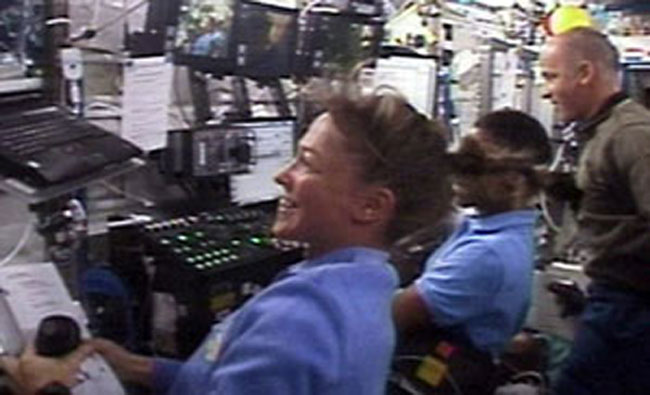
Piers Sellers and Michael Fossum transferred their EMUs from Discovery to the Quest module in preparation for their upcoming EVAs. Williams and Wilson used Canadarm2 to lift the OBSS sensory array from its storage unit on Discovery and hand it to Discovery’s RMS, and then the two crews retired until the next day.
During the first full day of joint operations, Canadarm2 was used to transfer Leonardo from Discovery’s cargo bay to the CBM on Unity. Concern about the straps on the CBM possibly preventing a tight seal caused a slight delay, and then Lindsey, Wilson and Reiter opened the hatches and began the complicated choreography of transferring cargo from Leonardo to the space station and also transferring packed items destined for return to Earth back to Leonardo.
Meanwhile, Nowak, Kelly and Wilson used the OBSS attached to the Discovery’s robotic arm to take more images of Discovery’s exterior. Some areas had taken minor damage from flying foam but none of them were considered critical. Mission planners decided to extend Discovery’s mission by a full day and add a third EVA.
EVA Highlights
Mostly from EVA #1 but lots of cool moments.
EVA #1
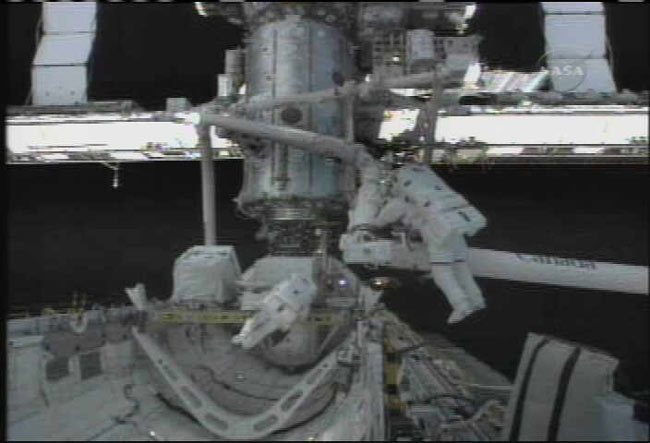
The first EVA of the STS-121 mission began at 09:17 on July 8, with Michael Fossum and Piers Sellers exiting through the Quest airlock. They began by replacing the cable that the Expedition 12 crew had removed from the Mobile Transporter to prevent the faulty emergency cutting blade from cutting it. They also installed a device that blocked the cable cutter blade, preventing it from cutting the cable in the future.
Then, Sellers and Fossum caught a ride on the Discovery’s robotic arm with OBSS as part of a test of the combination RMS/OBSS as a workstation with Nowak and Wilson operating the robotic arm from inside Discovery. Kelly monitored the activity and acted as the EVA astronauts’ guide. At first, they had some difficulty with the arm damping faster than they expected, but it soon sorted itself out. Sellers commented, “A little practice makes perfect.” They visited three simulated work positions, ending at the P-1 truss structure.
With that done, the two EVA astronauts returned to the Quest airlock after a duration of 7 hours and 31 minutes.
EVA #2
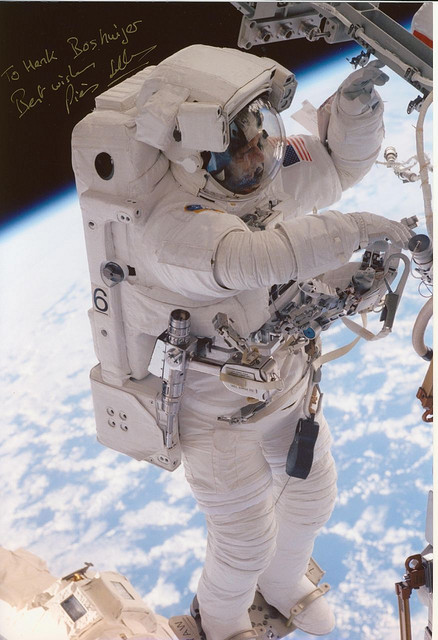
While the Expedition and Discovery crews continued unloading cargo that included a new sample freezer and oxygen generator from Leonardo, Sellers and Fossum spent most of July 9 cleaning their EMUs and prepping equipment for their second EVA. On the morning of July 10, they exited through Quest and lifted a spare pump module from its position in Discovery’s payload bay. Inside the space station, Nowak and Wilson used Canadarm2 to grasp it and move it to its final position on External Stowage Platform 2 (ESP-2).
The two spacewalkers moved on to the S-0 truss structure to replace the Mobile Transporter Trailing Umbilical System (TUS) cable that had been mistakenly cut. Fossum and Sellers replaced the interface Umbilical Assembly (IUA) with a new one that didn’t have a cutting blade. Then, they moved on to ESP-2 and secured the module in position. Sellers returned to Discovery’s payload bay to prepare a new reel assembly for the Trailing Umbilical System. With Canadarm2 now freed, Fossum mounted the robotic arm and rode it back to TUS. He removed the reel assembly and carried it down to Discovery’s payload bay. They installed the new reel assembly and routed it through the Interface Umbilical Assembly. This would provide redundancy that would help the Mobile Transporter support future assembly missions.
The SAFER unit on Seller’s suit had caused some concern during the spacewalk, causing the two men to pause to secure a loose connection on the jet-propelled backpack unit. The EVA ended with a duration of 6 hours and 47 minutes.
EVA #3

Most of July 11 was spent packing the Leonardo MPLM with cargo headed for Earth. Stephanie Wilson acted as the loadmaster, making sure everything was properly balanced and secured for reentry and landing. Sellers and Fossum prepped their EMUs for the third EVA.
The last EVA of STS-121 started early in the morning of July 12. Fossum and Sellers exited through Quest, collected tools from Discovery’s payload bay and installed a new foot restraint on Canadarm2. Sellers rode Canadarm2 to Discovery’s starboard wing with Nowak and Wilson operating it from within the International Space Station. He took several infrared images of the wing’s leading edge, which would be analyzed on the ground for any internal damage. Back at the payload bay, Sellers and Fossum tested several methods for repairing samples of heat-resistant Reinforced Carbon-Carbon panels similar to the ones on Discovery’s wing and sent infrared images back to Houston for analysis. The repairs involved using a caulking gun and spatulas modified for space work to apply a carbon-silicon polymer called NOAX to the tiles. Sellers reported that NOAX was easy to work with at first, though it got a bit tricky as he applied later coats. He did join the Space Litterers Club when he misplaced a spatula. “No sign of the spatula, guys. It is gone, gone, gone,” he reported to Houston. Flight controllers did spot it drifting away on Discovery’s cameras and assured Sellers that it wasn’t expected to pose a risk to the International Space Station or Discovery.
With that task finished, they got a head start on tasks scheduled for a future crew by moving a fixed grapple bar they had used to move the pump module during the second EVA to an ammonia tank on the S-1 Truss segment. The ammonia tank would be moved during an EVA slated for Expedition 15. The EVA ended with a duration of 7 hours and 11 minutes.
STS-121 Winds Down

July 13 was an easy day with only a few interviews. July 14 saw more interviews and the final loading of the Leonardo MPLM. It was deactivated and Canadarm2 transferred it back to Discovery’s payload bay. Lindsey and Reiter used the Discovery’s robotic arm with the OBSS to take a few final images of Discovery’s heatshield.
On July 15, the Expedition and Discovery crews wrapped up joint operations, and then sealed the hatches between the International Space Station and Discovery. The Discovery undocked at 06:08 and its crew took images of the starboard wing and nose cone. Ground controllers declared the heatshield “Go” for reentry. The Discovery performed a fly-around of the space station, and then maneuvered away and landed at the Kennedy Space Center on July 16.
Landing of STS-121
Space Shuttle Collectibles on eBay
[simple-rss feed=”http://rest.ebay.com/epn/v1/find/item.rss?keyword=Space+Shuttle+STS-121&categoryId1=1&sortOrder=BestMatch&programid=1&campaignid=5337337555&toolid=10039&listingType1=All&lgeo=1&feedType=rss” limit=5]


